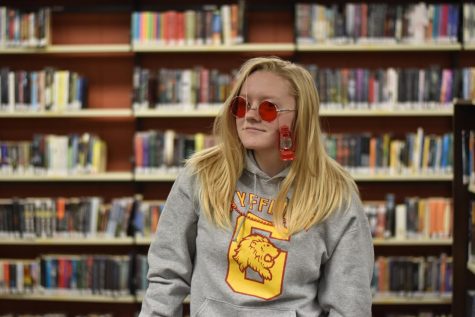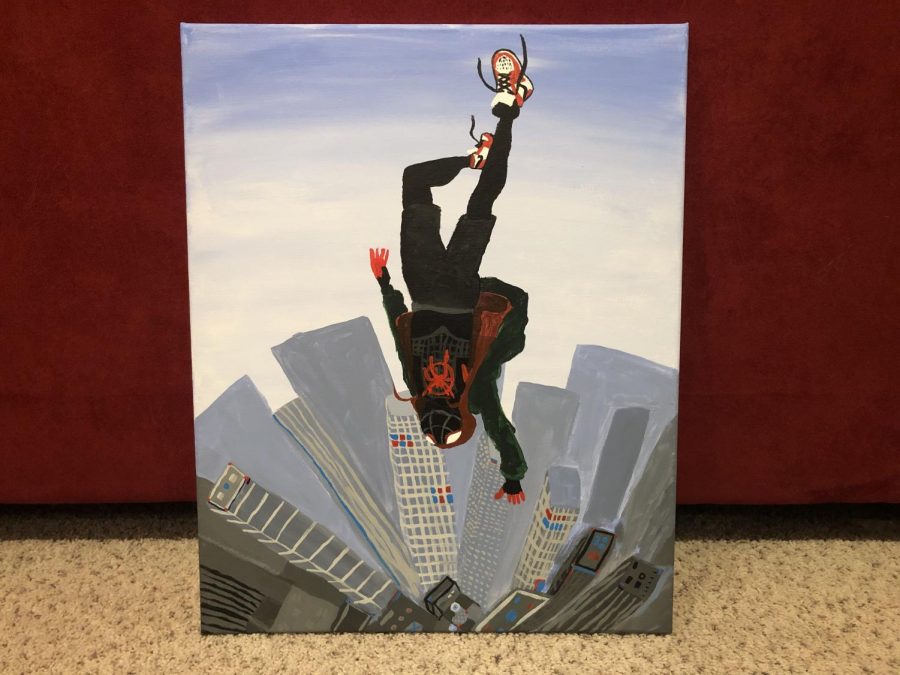Everyone deserves a cape
Superhero movies may appear empowering, yet marginalized individuals are underrepresented as the lead.
Although this painting of Spider Man is pretty epic, in the super hero world there needs to be more diversity.
“The star is unstoppable and spectacular to see in motion.” “…raises movie escapism very near the level of art: You’ve never seen anything like it in your life.” “A riot-grrrl power pulses through every frame, not to mention humor, heart and the thrill that comes from watching a genuine game-changer.” These are Rolling Stone’s reviews of “Wonder Woman”, “Black Panther”, and “Captain Marvel” respectively. They all have one thing in common; the lead wasn’t a strong, white male lead superhero. Now, superhero movies with stereotypical leads aren’t bad. It’s just that a more diverse collection of superheroes is needed in the film industry. These new superheroes should include all types of people because the world consists of more than one cookie-cutter shape and everyone deserves to be able to relate to a character who has the power to change the world.
There are two main groups that are lacking true representation in the cinematic superhero universe. The first group is people with disabilities. Many superheroes go through traumatic events which leave them changed mentally and physically. Then, to ‘fix’ what was changed, a solution, which ranges from a newer, stronger limb or body that suddenly allows them to fight crime to a mask that hides the horrors the hero went through, is found. In this way, representation is done well. However, there’s still no recognition of the injuries that can’t be reversed or the horrors that can’t be masked.
The other group which is still lacking representation is the LGBTQ community. While there have been many recent implications of homosexuality within film superheroes, very few have actually had the courage to shout it out to the public. For example, in the recent movie “Captain Marvel ” the main character and her best friend were giving off a strong ‘lovers’ vibe, but when asked about their relationship they only said that they had been ‘best friends’. Although “Captain Marvel” didn’t fully show representation for the LGBTQ community, it was a step in the right direction because Marvel had strongly implied a homosexual relationship and they had a strong female lead.
While there’s still a long way to go, these superhero movies have begun to walk on the path to a more diverse culture of heroes. “Captain Marvel” along with “Wonder Woman” have started down that road by showing more emphasis on female supers in the universe. For many young women, these movies were significant because they both had strong and confident female leads who were faced with numerous setbacks, yet persisted despite not fitting others’ cookie-cutters. The cinematic world of extraordinary supers has also begun having more representation for different races. There’s been a growing number of characters of different races; however, none of the movies really revolved around the race’s culture until “Black Panther”. This movie takes place in an African country called Wakanda and shows the process of the main character, T’Challa, taking the throne after his father was assassinated. Movies like these show how diversity amongst superheroes is expanding to fit a larger picture. The film industry needs to keep walking down this road so every child can have the chance to feel like they could put on a cape and become a superhero when they grow up.

Hi! I’m Olaf and I like warm hugs! Just kidding. My name is actually Ali. I wasn’t kidding about the hugs though. They’re great. Hugs not ughs, my...

